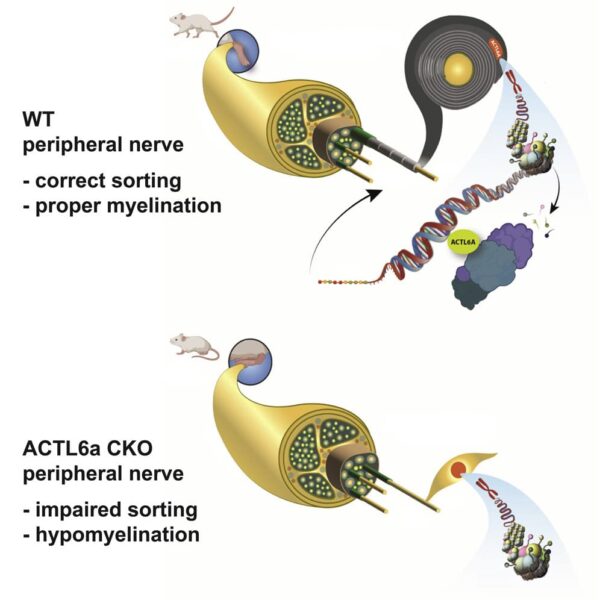Posted on April 25, 2022 in ASRC News, Neuroscience Initiative
Every day, billions of neurons send electrical signals that travel to and from our brains along the peripheral nerves, relaying messages that allow our muscles to function. Crucial to this network is myelin, a fatty substance that wraps around nerves much like insulation around wires. Myelin forms in layers called the myelin sheath, which allow the nerves to send fast signals.
Now, findings from the Advanced Science Research Center at the CUNY Graduate Center (CUNY ASRC) demonstrate how one molecule plays a key role in the process.

Led by Hye-Jin Park and Eric Tsai, researchers in the Neuroscience Initiative at the CUNY ASRC, the study reports that when mice Schwann cells lacked this protein, the ability to recognize nerve fibers was compromised. The mice were observed to show clinical signs, including paralysis of the hindlimbs.
“Overall, this suggests ACTL6a as a key player in the mechanobiology of Schwann cells,” said Professor Patrizia Casaccia (Biology, Biochemistry), director of the CUNY ASRC Neuroscience Initiative and a co-author of the study.
Casaccia says the results might one day help to develop treatments for people with peripheral neuropathies.
The study, “ACTL6a Coordinates Axonal Caliber Recognition and Myelination in the Peripheral Nerve,” was funded by the National Institute for Neurological Disorders and Stroke, part of the National Institutes of Health. The paper follows a separate study from Casaccia and colleagues in December 2021 that identified another protein, NDRG1, as important to the maintenance of the myelin sheath.
